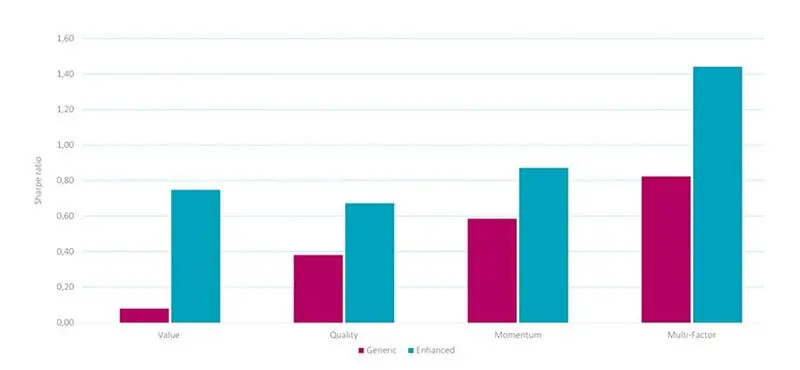Emerging markets account for around 58% of global GDP and this is forecasted to rise to 61% by 2026.1 Furthermore, more than 70% of the world’s population lives in these countries. However, emerging markets only represent about 12% of the MSCI All Country Index.
That said, the outlook for emerging markets has improved. As a group, emerging market stocks are cheaper than their developed market peers, partly due to the former lagging the latter in terms of performance over the last ten years. Thus on valuation grounds, they present an attractive prospect for global investors. Furthermore, our research shows there is a strategic case for allocating to emerging markets on an overall portfolio level.2
The macroeconomic backdrop could also provide support for emerging markets, given the group has a substantial current account surplus and is less troubled by inflation. Moreover, some individual countries even have room for fiscal and monetary stimulus.3 And while sustainable investing in emerging markets is considered challenging, our recent study illustrates that sustainable emerging market companies are actually as ‘green’ as those in developed markets.4
Emerging markets are fertile ground for quant factors
Historically, well-established factors have delivered solid performance in emerging markets. This is depicted in Figure 1 which highlights the annualized Sharpe ratios of both generic and enhanced value, quality, momentum and multi-factor (25% value, 25% quality, and 50% momentum) portfolios.
While generic value (book to market), quality (return on equity) and momentum (price momentum) factors exhibit positive Sharpe ratios ranging roughly between 0.1 and 0.6, their multi-factor combination achieves a Sharpe ratio of 0.8 due to diversification benefits.
Figure 1 | Generic versus enhanced emerging market equity factors, January 1996 to July 2022

Source: Refinitiv, Robeco. The figure shows the annualized Sharpe ratio of generic versus enhanced value, quality, momentum and multi-factor (25% value, 25% quality, and 50% momentum) composite factors. Factor returns are the return spreads between the top and bottom factor quintile portfolios. Portfolios are equal-weighted, rebalanced monthly and the holding period is six months. The investment universe consists of the non-financial constituents of the MSCI Emerging Markets Index. Before 2001, we use the largest 800 constituents of the S&P Emerging BMI at the semi-annual index rebalance going back to December 1995. The sample period is January 1996 to July 2022.
Enhanced factors have superior risk-adjusted performance
Our research demonstrates that these generic definitions can be substantially enhanced.5 For instance, the enhanced value composite6 that considers a broader range of fundamentals, such as earnings, cashflows, payouts, and intangible-adjusted book value, boosts the Sharpe ratio to nearly 0.8.
Similarly, a composite of quality metrics that has been shown to predict future growth in profitability (gross profitability, accruals, and investments)7 nearly doubles the Sharpe ratio compared to backward-looking return on equity.
While generic price momentum offers an attractive Sharpe ratio of almost 0.6, price momentum returns are also highly negatively skewed, exposing them to large drawdowns from time to time. Our research shows that a momentum composite that also considers residual8 and earnings momentum (price momentum, residual price momentum and analysts’ earnings revisions) exhibits a higher premium and significantly moderates these momentum crashes.
Finally, the enhancements of the individual factors also translate to the multi-factor level (again 25% value, 25% quality, and 50% momentum) as the Sharpe ratio for the multi-factor combination increases from 0.8 to about 1.4.
Footnotes
1IMF, April 2022, “World economic outlook database”, IMF.
2De Groot, W., and Zhou, W., October 2018, “Strategic allocation to emerging markets factor premiums”, Robeco white paper.
3Van Rijn, A., June 2022, “Anyone for hiking this summer?”, Robeco article.
4De Groot, W., and Sulman, V., June 2022, “Marrying sustainability and emerging markets expertise in quantitative strategies”, Robeco article.
5Robeco has published numerous papers on emerging markets over the last two decades. See for example: van der Hart, J., Slagter, E., and van Dijk, D., 2003, “Stock selection strategies in emerging markets”, Journal of Empirical Finance; van der Hart, J., de Zwart, G., and van Dijk, D., 2005, “The success of stock selection strategies in emerging markets: Is it risk or behavioral bias?”, Emerging Markets Review; Blitz, D., Pang, J., and van Vliet, P., 2013, “The volatility effect in emerging markets”, Emerging Markets Review; Hanauer, M. X., and Lauterbach, J. G., 2019, “The cross-section of emerging market stock returns”, Emerging Markets Review.
6Blitz, D., and Hanauer, M. X., January 2021, “Resurrecting the value premium”, Journal of Portfolio Management.
7Kyosev, G., Hanauer, M. X., Huij, J., and Lansdorp, S., May 2020, “Does earnings growth drive the quality premium”, Journal of Banking and Finance.
8Lansdorp, S., October 2013, “Robeco’s residual momentum: less risky and more sustainable”, Robeco article.
免責聲明
本文由荷宝海外投资基金管理(上海)有限公司(“荷宝上海”)编制, 本文内容仅供参考, 并不构成荷宝上海对任何人的购买或出售任何产品的建议、专业意见、要约、招揽或邀请。本文不应被视为对购买或出售任何投资产品的推荐或采用任何投资策略的建议。本文中的任何内容不得被视为有关法律、税务或投资方面的咨询, 也不表示任何投资或策略适合您的个人情况, 或以其他方式构成对您个人的推荐。 本文中所包含的信息和/或分析系根据荷宝上海所认为的可信渠道而获得的信息准备而成。荷宝上海不就其准确性、正确性、实用性或完整性作出任何陈述, 也不对因使用本文中的信息和/或分析而造成的损失承担任何责任。荷宝上海或其他任何关联机构及其董事、高级管理人员、员工均不对任何人因其依据本文所含信息而造成的任何直接或间接的损失或损害或任何其他后果承担责任或义务。 本文包含一些有关于未来业务、目标、管理纪律或其他方面的前瞻性陈述与预测, 这些陈述含有假设、风险和不确定性, 且是建立在截止到本文编写之日已有的信息之上。基于此, 我们不能保证这些前瞻性情况都会发生, 实际情况可能会与本文中的陈述具有一定的差别。我们不能保证本文中的统计信息在任何特定条件下都是准确、适当和完整的, 亦不能保证这些统计信息以及据以得出这些信息的假设能够反映荷宝上海可能遇到的市场条件或未来表现。本文中的信息是基于当前的市场情况, 这很有可能因随后的市场事件或其他原因而发生变化, 本文内容可能因此未反映最新情况,荷宝上海不负责更新本文, 或对本文中不准确或遗漏之信息进行纠正。

